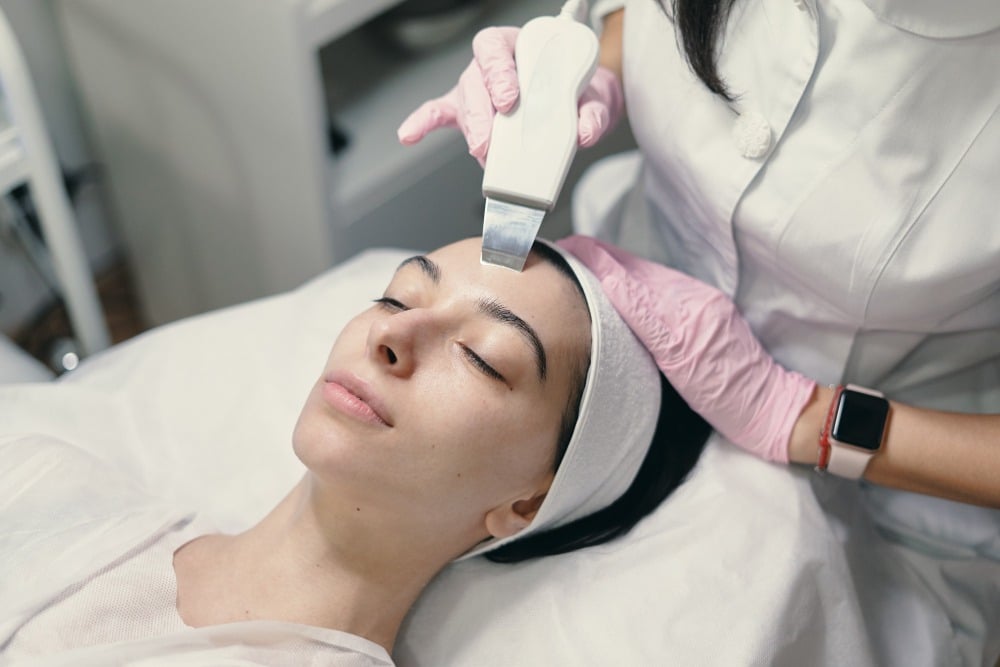Acne scars could distress and induce low self-esteem in many, and they are often caused due to trauma to the skin, inflammatory conditions, and infections. Acne results in damaged tissue and uneven skin texture making you appear not-so-fresh and beautiful.
There are many types of acne treatments available on the market to reduce the appearance of acne scars and improve your skin’s quality, but the issue is the scars that are left behind. No effective treatments are available though many claim to be. Nevertheless, the latest technology for laser skin resurfacing for acne can help you lessen the discoloration and unevenness of the skin.
What is laser skin resurfacing?
Laser skin resurfacing is a cosmetic procedure wherein a certified dermatologist or cosmetologist passes a high-intensity beam of light that carefully removes the outer layer of the skin.
This controlled damage stimulates the growth of new collagen and elastin fibers (these are the proteins responsible for skin’s strength, elasticity, and smoothness). Laser skin resurfacing smoothens out acne scars and makes them less noticeable as it removes the damaged skin and promotes new tissue formation.
Types of laser skin resurfacing for acne scars
There are several laser types dermatologists and cosmetologists use to skin resurfacing. The selection of laser type would depend on a few factors such as:
- The intensity and depth of acne scar
- The intensity of discoloration
- The type of the skin
- The desired results and time to achieve them
Some of the most common lasers for skin resurfacing include:
Ablative lasers
Ablative lasers vaporize the top layer of the skin to create a mild wound that the skin naturally tries to heal with new skin. These lasers are more suitable for deeper scars, but they include some risks and side effects.
Non-ablative lasers
Opposite to ablative lasers are non-ablative lasers. They heat up the underlying layer of the skin and don’t damage its surface. Non-ablative lasers are said to be less invasive and possess fewer side effects; nevertheless, such treatment requires more sessions and is likely to produce fewer effective results.
Fractional lasers
In laser skin resurfacing for acne scars, the other type of laser is a fractional laser. These lasers penetrate the skin to create microscopic holes though they leave some areas intact. Fractional lasers are known to blend the advantages of both ablative and non-ablative lasers because they are capable of digging down deeper into the layers of the skin without damaging the surface. Dermatologists use fractional lasers to cure a variety of acne scars: from mild to severe in less time and with fewer side effects.
The benefits of laser skin resurfacing for acne scars
Modern technology of lasers can help you heal acne scars and bring back the original texture of the skin along with the shade or color. Unlike other invasive surgical methods, laser skin resurfacing uses concentrated beams of light to remove damaged skin layers and stimulate skin growth. Laser skin resurfacing has several benefits, such as:
- Laser skin resurfacing for acne scars reduces the appearance of several acne scar types such as ice pick, boxcar, rolling, and hypertrophic scars which are, otherwise, difficult to treat.
- Laser resurfacing improves the skin texture, skin tone, and color of the skin. Laser-treated skin looks more even and radiant.
- Healing acne scars through laser resurfacing boosts skin collagen production that helps fill in depressed scars. Ultimately, it enhances the skin’s elasticity and firmness.
- Laser acne scar treatment minimizes the risk of infection, inflammation, and hyperpigmentation. These issues are quite common with other treatments like chemical peels or dermabrasion.
- The treatment through the laser can be customized to uniform different skin types, conditions, and goals. Dermatologists can adjust the type, intensity, and duration of the laser to get the maximum benefits to their patients.
- Laser skin resurfacing can be combined with other treatments to heal acne scars. Other remedies such as fillers or microneedling can be blended with laser treatment to achieve optimal results.
Conclusion
Laser skin resurfacing for acne scars is not a one-time procedure because it requires multiple sittings to achieve the best outcome; however, the number and frequency of visits are carried out looking at the severity and types of the scars and the type of laser used. It also depends on the individual’s response to the entire healing process. However, the acne scar healing results are long-lasting. You can improve your skin health over time with proper care and sun protection.

